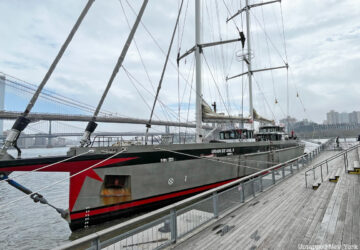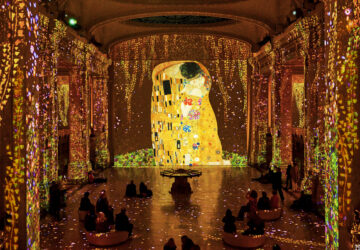
Marc Gordon, AIA, LEED®AP BD+C Partner, is a practicing architect in New York, where he’s a partner at the firm Spacesmith. This is his second article for Untapped Cities, following up on 8 Disappearing Neighborhoods and Districts.
On any given day, thousands of people pass by Trinity Church Graveyard at Broadway and Wall Street. Tourists walk among the headstones and workers eat lunch on the benches. It is a very picturesque and historic location and to some, it might be the only cemetery they are aware of on the island of Manhattan.
However, throughout Manhattan’s history there were scores of cemeteries, graveyards, and potters fields located throughout the island. While some of them still exist, many were abandoned, destroyed or moved, with their inhabitants reinterred to the outer Boroughs. Previous burying grounds, were built upon, became parks or were only rediscovered when being excavated for new construction. This is a brief history of the burial grounds associated with the Trinity Parish.
1. Trinity Church on Broadway

Trinity Church, established in 1696 by Charter of King William III, is an active Episcopal parish. The Church building, the third on this site which was designed by Richard Upjohn, (one of the co-founders of the AIA), towers over an historic cemetery where members of the first continental congress, revolutionary war heroes, a signer of the Declaration of Independence, a famous inventor and a recent Broadway star named Alexander Hamilton are interred. Hamilton also happens to be one of the founding fathers of the United States, was the first Treasury Secretary, started the Coast Guard and the founded the New York Post, just to name a few accomplishments.
Aaron Burr, the Vice President at the time, mortally wounded Hamilton in a Duel in 1804 in Weehawken, New Jersey. Burr was serving as V.P under Thomas Jefferson, but was being dropped from the ticket for a second term of Jefferson’s Administration, so Burr decided to run for Governor of New York instead. He was soundly defeated by Morgan Lewis. Burr blamed Hamilton for being dropped from Jefferson’s administration and subsequent defeat for the Governorship due to Hamilton running a vigorous campaign against Burr’s election.

Burr challenged Hamilton to a duel, which took place in in New Jersey because dueling was outlawed in New York. Hamilton was mortally wounded and was taken back across the Hudson River to Manhattan where he died at the home of William Bayard, a friend, on Jane Street in the village. Burr was indicted for murder but the case was dropped and he finished out his vice presidency. Alexander Hamilton’s grave sits along the southern fence of the cemetery and is near a marker of his son Philip’s grave, who ironically was shot in a duel in 1801 at the same spot in Weehaken, by George Eacker. Philip Hamilton called out George Eacker after hearing Eacker’s public criticism of his father at a speech at Columbia University.
The cemetery, a national historic landmark is in a beautiful park setting with manicured lawns and flowers. However, this wasn’t always the case. As the city grew around the church, the population increased. The neighborhood became more commercial and the cemetery had no room for expansion. However, more interments occurred, until there were tens of thousands of bodies buried there. The situation became dire after the yellow fever outbreak of 1822. It was not known exactly how many were buried there, but many reports of shallow graves, exposed caskets and the stench of decomposing corpses, especially in the summer, led the city to ban further burials at Trinity Cemetery.






